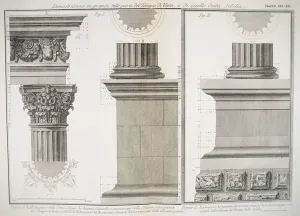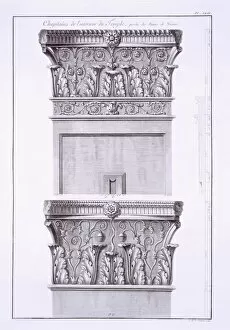Composite Order Collection
The composite order, also known as the Roman Composite, is a classical architectural style that combines elements of both the Ionic and Corinthian orders
All Professionally Made to Order for Quick Shipping
The composite order, also known as the Roman Composite, is a classical architectural style that combines elements of both the Ionic and Corinthian orders. This unique fusion creates a visually stunning and harmonious design that has been admired for centuries. One notable example of the they are be seen in Plate CXI-XII, which illustrates the column structure of the Temple of Vesta. The intricate details and graceful proportions showcase the beauty and sophistication of this architectural style. Another depiction of the they are be found in "The Annunciation, " a masterpiece by an unknown artist from around 1502. The painting, executed with oil on wood transposed on canvas, showcases how this architectural style was incorporated into religious art during the Renaissance period. St. Lawrence, to whom the Escorial monastery was dedicated, is another figure associated with the composite order. This dedication highlights its significance in religious architecture and its ability to evoke a sense of grandeur and spirituality. A frontispiece featuring a medallion portrait of Raphael further exemplifies how influential artists embraced this architectural style in their works. Raphael's use of symmetry and balance mirrors that found within buildings designed using the composite order. Even outside Italy, examples such as Rome's Arch of Gold- and Silversmiths from 1682 demonstrate how this style transcended borders and time periods. Its enduring appeal can still be appreciated through engravings like these. Religious manuscripts were not exempt from incorporating elements inspired by classical architecture either; St. Peter and St. Paul are depicted in facsimiles from King Philip II's Breviary adorned with capitals influenced by the composite order. Beyond sacred spaces or artworks, even Napoleon I Bonaparte himself enjoyed sleeping on a bed designed according to this architectural tradition while residing at Palais Royal during his tenure as First Consul. Capital fragments discovered near Roman Baths in Nimes provide evidence that French architects also drew inspiration from ancient Roman designs.











